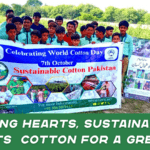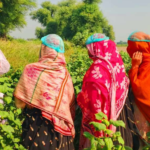News
Flood Crisis 2025: Rising Waters Leave Millions Affected
Pakistan is facing one of its most severe flood crises in decades. Millions have been displaced, farmlands destroyed, and communities are struggling for survival.

Top News
Since late June 2025, Pakistan has been hit by one of the most devastating flood seasons in decades. Torrential monsoon rains, accelerated glacier melt, and upstream river releases have combined to create a nationwide disaster.
-
Human Toll: More than 800–900 lives lost, including hundreds of children. Khyber Pakhtunkhwa and Punjab remain the worst-hit, with districts like Buner reporting over 150 deaths alone. Thousands more are injured or missing.
-
Displacement: The floods have displaced over 1 million people in Punjab, while another 250,000 people have been forced to flee in eastern Punjab. Nationwide, more than 210,000 people are displaced, with evacuation operations ongoing.
-
Affected Areas: More than 1,400 villages inundated, particularly in Punjab’s farming belt, submerging crops and livestock. In Lahore and other cities, tens of thousands were evacuated due to urban flooding.
-
Damage to Homes & Infrastructure: Over 4,000 homes destroyed or damaged. Key infrastructure, including roads, bridges, and even religious sites like Kartarpur Sahib, has been damaged. Relief and medical camps are stretched thin, with hundreds of camps set up to accommodate the displaced.
-
Causes: Experts point to 15% above-average rainfall, rapid glacier melt, poor urban planning, and cross-border river surges as the main drivers. Climate change has magnified the frequency and intensity of floods, leaving communities vulnerable year after year.
-
Relief Efforts: The Pakistan Army, NGOs, and international agencies are coordinating evacuations and emergency relief. However, the scale of the disaster demands urgent global solidarity, funding, and long-term climate adaptation strategies.
Outlook: With rains forecast to continue, the humanitarian crisis is expected to worsen. Millions remain at risk, requiring food, shelter, medical aid, and climate-resilient rebuilding support.



